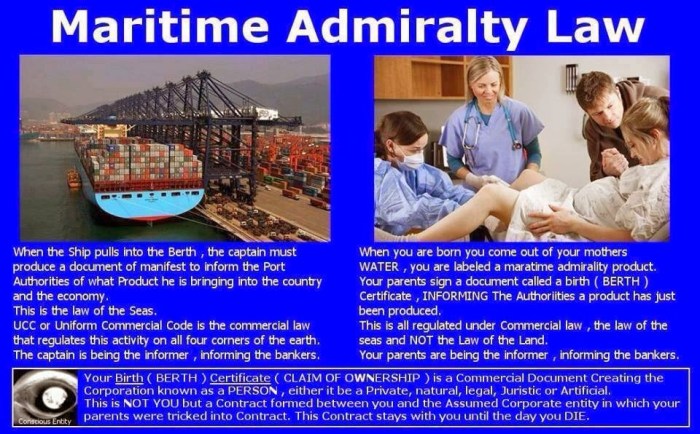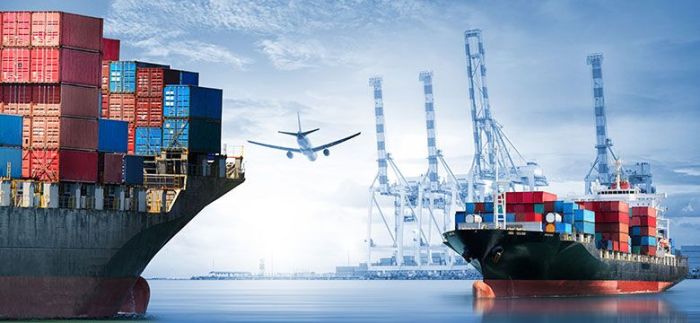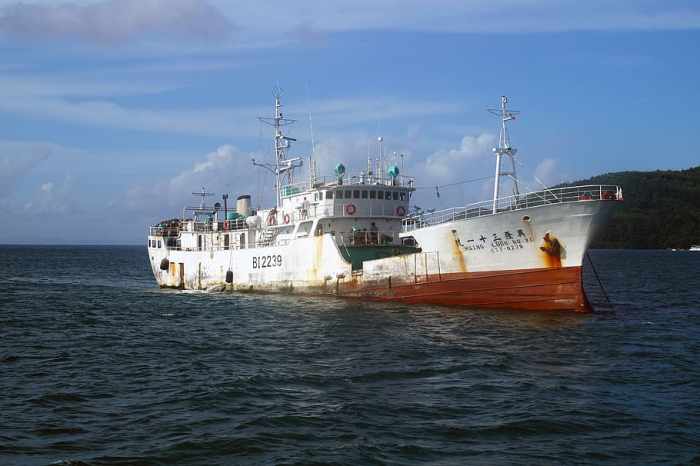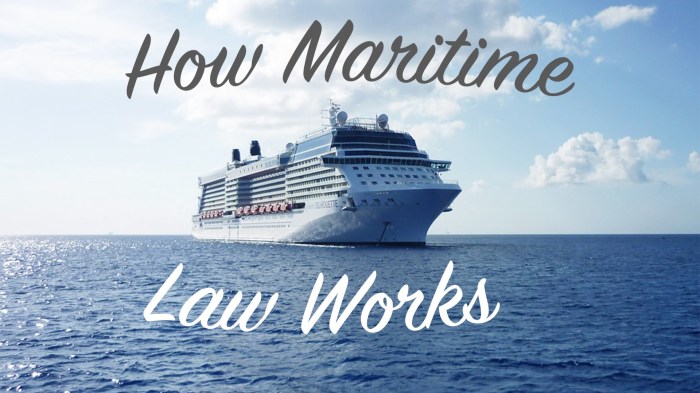Reglamento de la ley de navegacion y comercio maritimo – The Reglamento de la Ley de Navegación y Comercio Marítimo serves as a comprehensive framework governing maritime navigation and trade, providing a robust set of regulations and guidelines that ensure the safety, efficiency, and environmental sustainability of maritime activities.
This meticulously crafted regulation encompasses a wide range of aspects, from vessel registration and documentation to safety and navigation requirements, cargo handling and transport, environmental protection, and enforcement and penalties. By delving into the intricacies of this regulation, we gain a profound understanding of the legal and operational framework that governs the maritime industry.
Scope and Applicability of the Regulation
The Regulation on Navigation and Maritime Commerce establishes a comprehensive framework for regulating the operation of vessels and maritime activities within the jurisdiction.
The regulation applies to all vessels, regardless of size or type, that are engaged in commercial or recreational activities within the territorial waters, ports, and internal waterways of the jurisdiction.
Geographic Scope
The regulation extends to all navigable waters within the jurisdiction, including rivers, lakes, and coastal waters. It also applies to vessels operating in the exclusive economic zone (EEZ) and the continental shelf.
Vessel Registration and Documentation

Vessel Registration
All vessels operating within the jurisdiction must be registered with the designated maritime authority.
The registration process involves providing information about the vessel’s ownership, dimensions, tonnage, and intended use.
Vessel License or Permit
In addition to registration, certain types of vessels may require a license or permit from the maritime authority.
These licenses or permits may be required for vessels engaged in specific activities, such as commercial fishing, passenger transport, or towing.
Documentation
Vessels operating under the regulation must carry certain documentation on board, including the vessel’s registration certificate, license or permit, and a record of safety inspections.
Safety and Navigation Requirements

Safety Standards
The regulation establishes safety standards for vessels operating within the jurisdiction.
These standards cover aspects such as vessel design, construction, equipment, and maintenance.
Navigation Rules
The regulation also includes navigation rules that govern the movement of vessels in navigable waters.
These rules aim to prevent collisions and ensure the safe and orderly flow of maritime traffic.
Vessel Equipment and Personnel
The regulation specifies the equipment and personnel required on board vessels operating within the jurisdiction.
This includes requirements for life-saving appliances, navigation equipment, and trained crew members.
Reporting Accidents and Incidents
Vessels are required to report all accidents and incidents to the designated maritime authority.
The report must include information about the circumstances of the incident, any injuries or damage sustained, and any corrective actions taken.
Cargo Handling and Transport

Cargo Handling Regulations
The regulation establishes regulations for the handling and transport of cargo on vessels.
These regulations aim to ensure the safe and efficient loading, unloading, and securing of cargo.
Cargo Documentation and Manifests
Vessels are required to maintain accurate documentation for all cargo on board.
This documentation includes cargo manifests, which provide information about the type, quantity, and destination of the cargo.
Loading, Unloading, and Securing Cargo
The regulation provides detailed procedures for the loading, unloading, and securing of cargo on vessels.
These procedures are designed to prevent accidents and ensure the safety of the crew, the cargo, and the vessel.
Environmental Protection
Environmental Protection Measures, Reglamento de la ley de navegacion y comercio maritimo
The regulation includes measures to protect the marine environment from pollution and damage.
These measures include requirements for waste disposal, oil spill prevention, and ballast water management.
Regulations for Preventing Pollution from Vessels
The regulation prohibits the discharge of harmful substances into the marine environment.
This includes regulations on sewage, bilge water, and other waste materials.
Procedures for Responding to Environmental Incidents
Vessels are required to have procedures in place for responding to environmental incidents, such as oil spills or hazardous material releases.
These procedures must be approved by the designated maritime authority.
Enforcement and Penalties: Reglamento De La Ley De Navegacion Y Comercio Maritimo

Enforcement Authorities
The regulation is enforced by the designated maritime authority and other authorized agencies.
These agencies have the power to inspect vessels, detain violators, and impose penalties.
Penalties for Violations
Violations of the regulation can result in a range of penalties, including fines, vessel seizure, and suspension or revocation of licenses or permits.
Reporting and Investigating Violations
Any person who witnesses a violation of the regulation is encouraged to report it to the designated maritime authority.
The authority will investigate the report and take appropriate enforcement action.
Clarifying Questions
What is the scope of the Reglamento de la Ley de Navegación y Comercio Marítimo?
The regulation applies to all vessels engaged in commercial navigation and trade within the territorial waters of the country, as well as to vessels flying the country’s flag on the high seas.
What are the requirements for vessel registration under the regulation?
Vessel registration requires the submission of specific documentation, including proof of ownership, vessel specifications, and safety certificates. The registration process ensures that vessels meet the minimum safety and operational standards.
What safety and navigation requirements are imposed by the regulation?
The regulation establishes stringent safety and navigation requirements, including standards for vessel construction, equipment, and personnel. These requirements aim to minimize the risk of accidents and incidents, ensuring the safety of passengers, crew, and the marine environment.